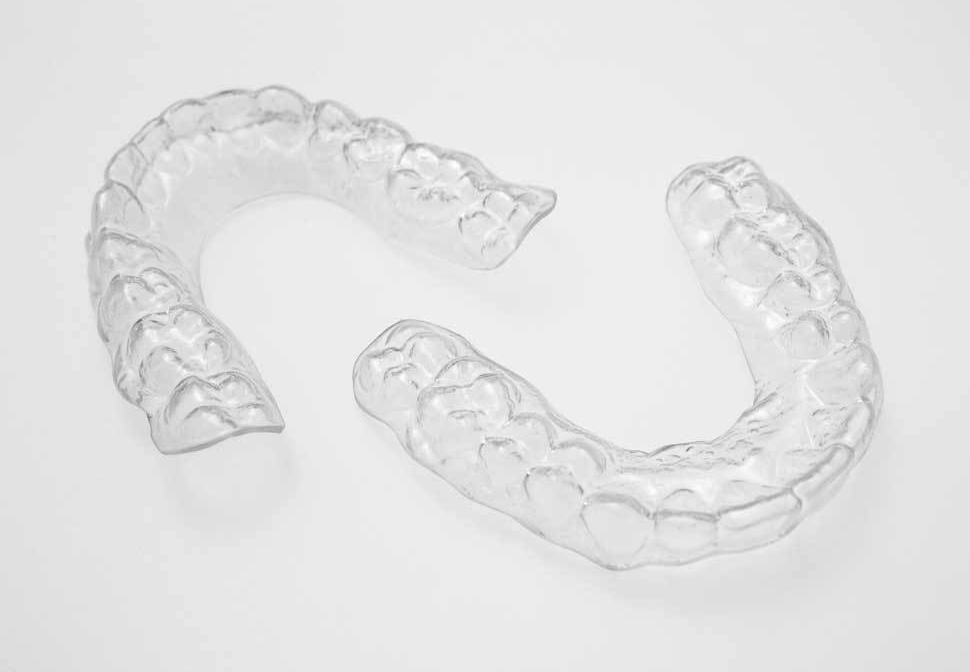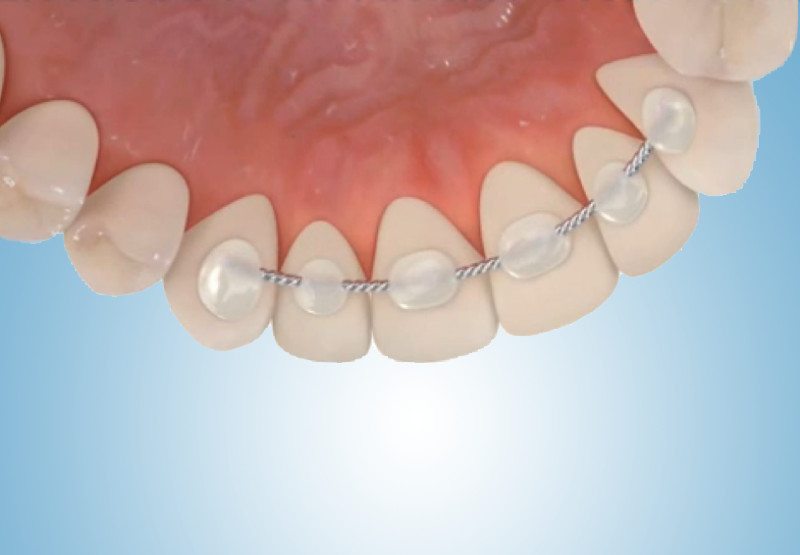Retainers
Used after braces to hold the teeth in position
At the end of brace treatment, teeth always try to move back towards their position at the start of treatment. This is called orthodontic relapse.
Orthodontists and dentists try to reduce the chances of this happening by fitting retainers when the braces are taken off.
There are two main types of retainers: removable or fixed.
 Removable “Essix” retainers
Removable “Essix” retainers
 Wire retainer fixed to a person’s teeth
Wire retainer fixed to a person’s teeth
Removable retainers fit over most of the teeth to keep them in position and are made from plastic.
Fixed retainers are short wires normally glued onto the inside surface of the front teeth and keep the front teeth in their new position.
Why are retainers used?
We are not sure why teeth relapse. As we get older our front teeth tend to crowd up anyway. This is a normal feature of getting older, just like getting grey hair and weaker eyesight. Retainers can reduce these age-related changes to our teeth and help maintain the improvements made by the braces
What are the best retainers?
Currently, there is no strong evidence to support the use of one type of retainer over another (Littlewood et al., 2016). Removable retainers have the advantage of covering more teeth, however if they are not worn enough they will not work. They can also break and require repair or replacement.
Fixed retainers are glued to the teeth so it means patients do not need to remember to wear them (as for removable retainers). However, they are only placed on the front teeth so many orthodontists or dentists also fit a removable retainer to hold the remaining teeth in position. They can also break and teeth may still move a small amount even with these fixed wires in place.
Regardless of which retainers are chosen, it is important to look after the retainer to ensure they are effective at keeping the teeth straight and the bite correct. Most orthodontists will check the retainers for the first 12 months after your braces are taken off but then your general dentist will usually be asked to monitor your retainers after that.
How long should you wear your retainers for?
As long as you want to keep your teeth straight and the bite correct you should use some form of retainer, at least on a part-time basis. Orthodontic relapse happens most quickly within the first year after having the fixed braces taken off, but gradual tooth movement can still occur at any point after brace removal.
Removable retainers can be worn all the time or up to 6 months before being worn only in bed at night. Alternatively, they may be worn night-time only from the outset. The evidence suggests that there is no advantage to either retainer regime. It is best to consult your dentist or orthodontist for advice relating to wear of your retainers.
Reference: Littlewood SJ, Millett DT, Doubleday B, Bearn DR, Worthington HV. Retention procedures for stabilising tooth position after treatment with orthodontic braces. Cochrane Database Syst Rev. 2016 Jan 29;(1):CD002283. doi: 10.1002/14651858.CD002283.pub4.